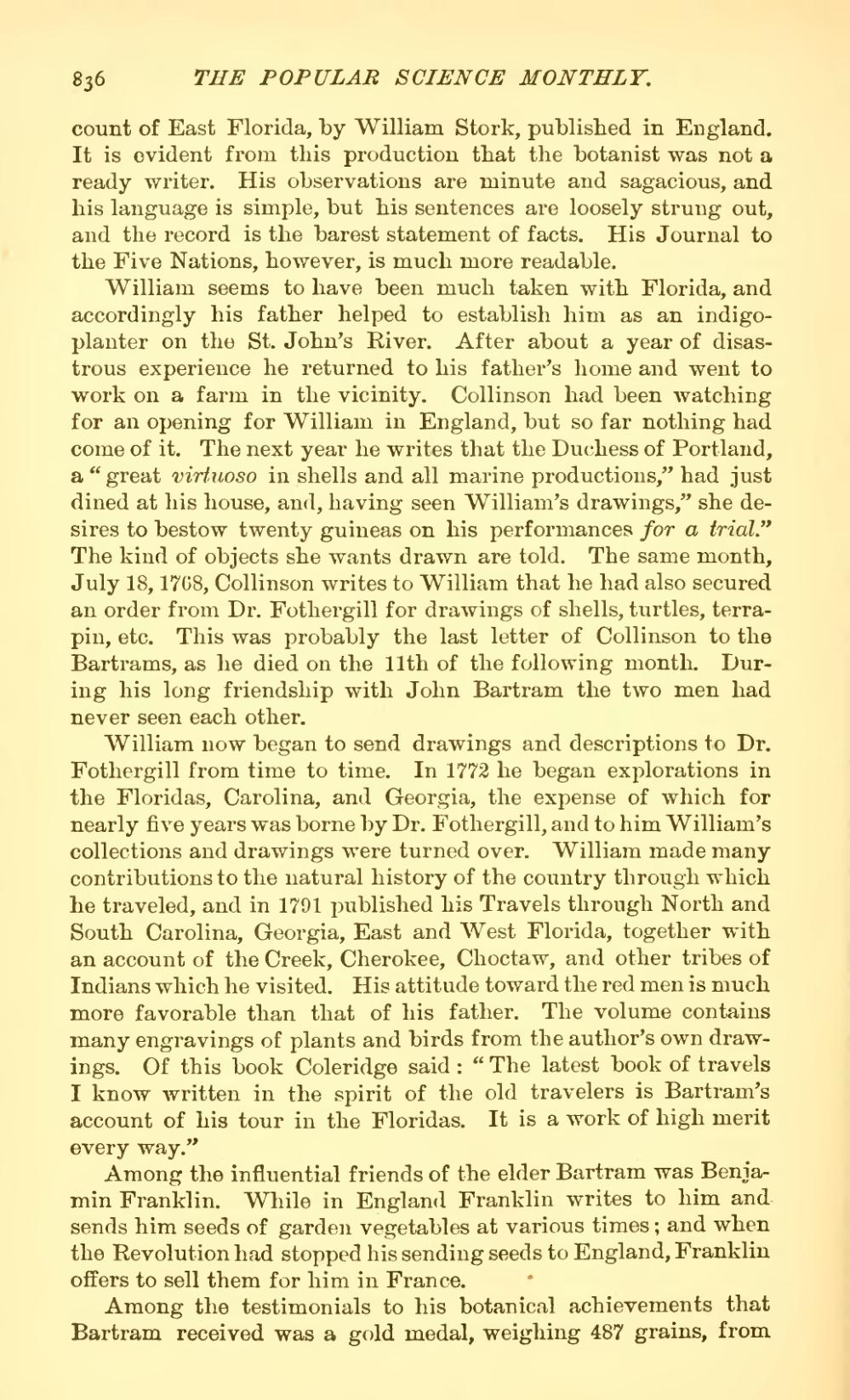count of East Florida, by William Stork, published in England. It is evident from this production that the botanist was not a ready writer. His observations are minute and sagacious, and his language is simple, but his sentences are loosely strung out, and the record is the barest statement of facts. His Journal to the Five Nations, however, is much more readable.
William seems to have been much taken with Florida, and accordingly his father helped to establish him as an indigoplanter on the St. John's River. After about a year of disastrous experience he returned to his father's home and went to work on a farm in the vicinity. Collinson had been watching for an opening for William in England, but so far nothing had come of it. The next year he writes that the Duchess of Portland, a "great virtuoso in shells and all marine productions," had just dined at his house, and, having seen William's drawings, "she desires to bestow twenty guineas on his performances for a trial." The kind of objects she wants drawn are told. The same month, July 18, 1768, Collinson writes to William that he had also secured an order from Dr. Fothergill for drawings of shells, turtles, terrapin, etc. This was probably the last letter of Collinson to the Bartrams, as he died on the 11th of the following month. During his long friendship with John Bartram the two men had never seen each other.
William now began to send drawings and descriptions to Dr. Fothergill from time to time. In 1773 he began explorations in the Floridas, Carolina, and Georgia, the expense of which for nearly five years was borne by Dr. Fothergill, and to him William's collections and drawings were turned over. William made many contributions to the natural history of the country through which he traveled, and in 1791 published his Travels through North and South Carolina, Georgia, East and West Florida, together with an account of the Creek, Cherokee, Choctaw, and other tribes of Indians which he visited. His attitude toward the red men is much more favorable than that of his father. The volume contains many engravings of plants and birds from the author's own drawings. Of this book Coleridge said: "The latest book of travels I know written in the spirit of the old travelers is Bartram's account of his tour in the Floridas. It is a work of high merit every way."
Among the influential friends of the elder Bartram was Benjamin Franklin. While in England Franklin writes to him and sends him seeds of garden vegetables at various times; and when the Revolution had stopped his sending seeds to England, Franklin offers to sell them for him in France.
Among the testimonials to his botanical achievements that Bartram received was a gold medal, weighing 487 grains, from
